#dr. seuss and mr. geisel
Explore tagged Tumblr posts
Video
youtube
You're a Mean One, Mr Grinch is a Christmas song that was originally written and composed for the 1966 cartoon special How the Grinch Stole Christmas!.
The lyrics were written by Theodor "Dr. Seuss" Geisel, the music was composed by Albert Hague, and the song was performed by Thurl Ravenscroft.
#youtube#you're a mean one mr. grinch#1966#1960s#the grinch#music#video#how the grinch stole christmas#lyrics#theodor geisel#dr seuss#albert hague#thrul ravenscroft#composer#christmas#animation#cartoon#audio
8 notes
·
View notes
Text
collaboration spotlight — Epic Christmas Movie Medley by Peter Hollens
youtube
Music is a big part of Christmas season festivities, and holiday movies are no exception. Some existing songs have inspired the creation of films. Others have been written specifically for the movies they're in. Either way, a catchy tune has the power to bring a smile to your face and maybe even sing along. For this feel-good medley, Peter got his family and a couple new friends in on the act.
Details:
title: Epic Christmas Movie Medley (feat. Brian Hull & Geoff Castellucci)
performers: Peter Hollens, Evynne Hollens, Ashland Hollens, Brian Hull, & Geoff Castellucci
original songs / performers: "Rudolph the Red-Nosed Reindeer" by Burl Ives in Rudolph the Red-Nosed Reindeer (1964); [0:33] "White Christmas" by Bing Crosby & Marjorie Reynolds in Holiday Inn (1942); [1:08] "Frosty the Snowman" by Jimmy Durante in Frosty the Snowman (1969); [1:48] "Baby It's Cold Outside" by Esther Williams, Ricardo Montalbán, Betty Garrett, & Red Skelton in Neptune's Daughter (1949); [2:20] "Christmas Time Is Here" by the cast of A Charlie Brown Christmas (1965); [2:45] "The Snow Miser Song" by Dick Shawn & [3:13] "The Heat Miser Song" by George S. Irving in The Year Without a Santa Claus (1974); [3:36] "You're a Mean One, Mr. Grinch" by Thurl Ravenscroft in How the Grinch Stole Christmas! (1966); [4:29] "Santa Claus Is Comin’ To Town" by Fred Astaire in Santa Claus Is Comin’ To Town (1970)
written by: "Rudolph the Red-Nosed Reindeer" by John David Marks; "White Christmas" by Irving Berlin; "Frosty the Snowman" by Walter "Jack" Rollins and Steve Nelson; "Baby It's Cold Outside" by Frank Loesser; "Christmas Time Is Here" by Vince Guaraldi & Lee Mendelson; "The Snow Miser Song" & "The Heat Miser Song" by Maury Laws & Jules Bass; "You're a Mean One, Mr. Grinch" by Theodor "Dr. Seuss" Geisel & Albert Hague; "Santa Claus Is Comin’ To Town" by J. Fred Coots & Haven Gillespie
arranged by: Peter Hollens
release date: 18 December 2020
My favorite bits:
introducing all the characters they're playing so folks can identify the movies, even the ones without songs in the medley
Ashland's sweet, clear tone in "Frosty" ⛄
Evynne's lovely crooning on "Baby It's Cold Outside" and her reactions as Peter shoves more and more food into his mouth
Snow Miser Peter and Heat Miser Brian messing with the characters in other sections of the screen ❄🔥
Geoff's luscious bass and Peter's semi-operatic tone in "Grinch"
their bouncy, syncopated take on "Santa Claus"
following ♫ "You better not pout" ♫ with "You'll shoot your eye out!" from A Christmas Story 🤭
reprising all the songs in the build-up to the ending
Peter's adorable fatherly pride in the outro



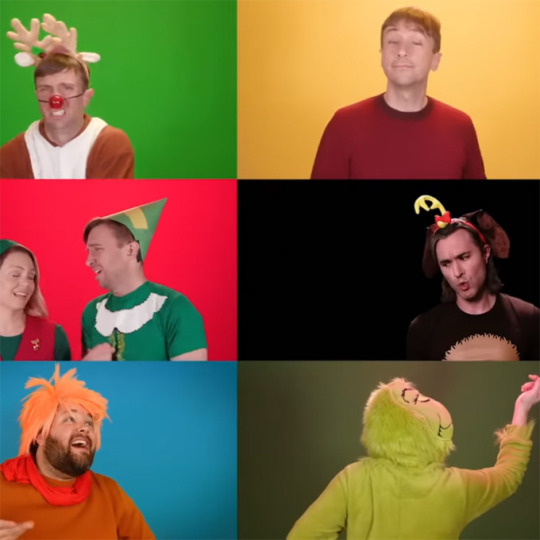
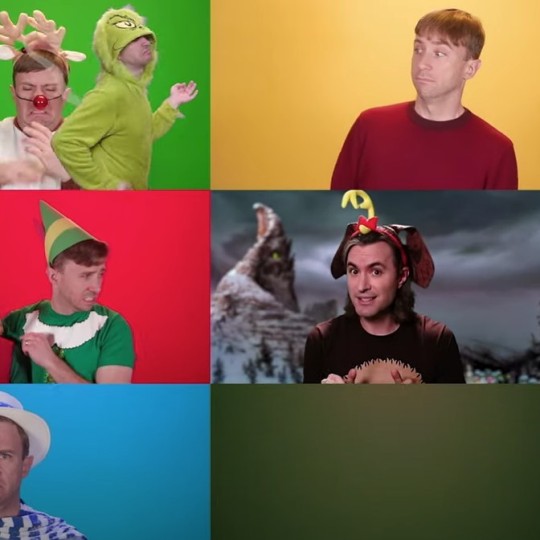
Trivia:
Because the video title is fairly long, many first-time viewers were surprised by Brian and Geoff's cameos since their names got cut off on the main YouTube page.
Geoff pops up in costume as Max the dog, who the Grinch conscripts into being his reindeer. VoicePlay's jazzier version of "You're A Mean One, Mister Grinch" (in which Layne briefly wore the antler headband) was released a few weeks earlier.
Brian first collaborated with Peter for his "Epic Disney Sidekicks Medley" the year before, and they have made occasional appearances in each other's projects over the years since.
Geoff and Brian both returned the following year to get spooky in Peter's cover of "This Is Halloween" from The Nightmare Before Christmas.
This video was the opening segment in a 25-minute compilation of Peter's holiday songs four years later.
Although they didn't include the song — because it's not from a movie, and also Ashland didn't want to — a commenter did note that it was fortuitous timing that the kiddo had lost his two front teeth before they filmed this.
#Peter Hollens#Brian Hull#Geoff Castellucci#music video#music#music medley#Christmas music#music from movies#video
3 notes
·
View notes
Text
The Grinch You're A Mean One Mr Grinch EASY solo piano arr by Dr Seuss and Albert Hague (sheet music)
The Grinch You're A Mean One Mr Grinch EASY solo piano arr by Dr Seuss and Albert Hague (sheet music)Best Sheet Music download from our Library.Please, subscribe to our Library. Thank you!The Grinch - History"You're a Mean One, Mr Grinch" ~ Dr Seuss (The original song)Lyrics:Browse in the Library:
The Grinch You're A Mean One Mr Grinch EASY solo piano arr by Dr Seuss and Albert Hague (sheet music)
https://youtu.be/Pg0Nd8fH1mk?si=BLJXsNM-sZtcT57_

The Grinch - History
"You're a Mean One, Mr. Grinch" is a Christmas song that was originally written and composed for the 1966 animated special Dr. Seuss' How the Grinch Stole Christmas!. The lyrics were written by Theodor "Dr. Seuss" Geisel, the music was composed by Albert Hague, and the song was performed by Thurl Ravenscroft. Because Ravenscroft was not credited in the closing credits of the special, it is often mistakenly attributed to Boris Karloff, who served as narrator and the voice of the Grinch in the special but is not a trained singer. Until Ravenscroft was publicly credited, Tennessee Ernie Ford was also speculated to be the voice behind the song. The soundtrack to the special won the Grammy Award for Best Album for Children at the 10th Annual Grammy Awards.

The song has been incorporated into most other adaptations of the story. In the 2000 live-action film, Jim Carrey performs the song in character as the Grinch, singing about himself. The stage musical adaptation included the song in the score, among several other original numbers composed specifically for that production. The 2018 CGI animated film features a substantially updated version of the song from Tyler, the Creator featuring an orchestral arrangement by Danny Elfman. The song was also covered by New Jersey alternative rock band the Whirling Dervishes. Writer Chris Jordan of the Asbury Park Press called their version "wonderfully depraved in the best of holiday ways" and noted that their version became a 'Jersey' classic. Other artists who have recorded versions include Cee Lo Green with Straight No Chaser, Tyler, The Creator, Mojo Nixon, Aimee Mann, Pentatonix, Jordan Smith, Misfits, Kidz Bop Kids, Darius Rucker, That Handsome Devil, Burl Ives, Lindsey Stirling, Dweezil Zappa, Deanna Kirk, Rachel Platten, k.d. lang, Darius Rucker and Dailey & Vincent. "You're a Mean One, Mr Grinch" ~ Dr Seuss (The original song) https://www.youtube.com/watch?v=3Hj3U18FHgQ Lyrics: You're a mean one You really are a heel You're as cuddly as a cactus You're as charming as an eel Mr. Grinch, you're a bad banana Mr. Grinch, with the greasy black peel You're a vile one You got termites in your smile You have all the tender sweetness Of a seasick crocodile Mr. Grinch You're a foul one Friends you don't have none I wouldn't touch you with a 39-and-a-half foot pole! You're a monster Your heart's an empty hole You're a goner You got garlic in your soul You got garlic in your soul All them smiles homie I turn up the frown All them decorations I tear em down You can ask Max, I don't play around Ayo, eww Who is this mean fellow With his skin all green and his teeth all yellow? (Eww) What you so mad for? Halloween come around and we ain't knockin' at your door, mane Mr. Grinch you're a bad banana You're gonna spoil everybody with your bad attitude (Spoil everybody) Mr. Grinch La-la-la-la Who is this mean fellow With his skin all green and his teeth all yellow? (La-la-la-la) What you so mad for? Halloween come around and we ain't knocking on your door (La-la) Bad banana Read the full article
#SMLPDF#noten#partitura#sheetmusicdownload#sheetmusicscoredownloadpartiturapartitionspartitinoten楽譜망할음악ноты
0 notes
Text
Rooty Toot Toot - 1951, Dir. Jon Hubley
As I discussed in my previous post examining the interviews by Don Peri with Frank Thomas and Ollie Johnston, during the 1940's the Walt Disney Productions studio underwent a serious restructuring of goals and methods of animation. Following a contentious change in direction from a studio that was largely concerned with creating new kinds of entertainment through artistic experimentation, Disney began to focus more on consistently producing a more refined, realistic style of animation that would supposedly be more accessible to the average viewer. This coincided with the 1941 Disney Animator's strike, which by and large was concerned with uneven pay and practices at the studio which was a non-unionized workplace (although this was contested by Thomas and Johnston who believed there to be communistic ideals behind the strike). In retaliation to this strike (in addition to more underhanded tactics like allegedly hiring goons to break up picket lines and testifying against strikers in anti-communist hearings) Disney fired many of the animators, and although he was eventually pressured into allowing some of them to return by the Screen Cartoonist's Guild, others were disillusioned with the studio and instead left to pursue their own projects. The most notable of these is likely the highly influential independent studio known as the United Productions of America, or simply UPA.

UPA logo, Alvin Lustig, 1947
UPA became known for its extremely stylized, exaggerated and sparse style. Intentionally stepping away from the standard "funny animal" characters that were at that time very common in animation, especially in Disney productions, UPA often instead focused on caricatures of humans that could be animated relatively quickly and cheaply in its limited animation style, similarly to another one of my previous posts, The Dover Boys. Although they were producing shorts as early as 1944, the studio's main animated successes were the series based around Mr. Magoo, a short-sighted elderly curmudgeon who repeatedly avoids certain death by sheer luck, and the popular theatrical short Gerald McBoing-Boing, a young boy who can only communicate in sound effects, the original story of which the short was based upon being written by Theodor Geisel, better known as Dr. Seuss.

A screenshot of Gerald McBoing-Boing, featuring UPA's stylized human characters and sparse background art.
John Hubley, although not a founder of UPA, was one of its earliest employees and like many others of his ilk, was a former Disney artist who, while supposedly one of the better paid of the strikers, still felt limited by the artistic restrictions of Disney's mandates for realism. Despite the successes the studio had experienced so far, there allegedly existed a fair bit of animosity between the key artists working in UPA. Gerald McBoing-Boing won the studio an Academy award, and Hubley was eager to create a film that was equally influential. This led to the creation of UPA's most expensive and artistically ambitious cartoon yet, 1951's Rooty Toot Toot.
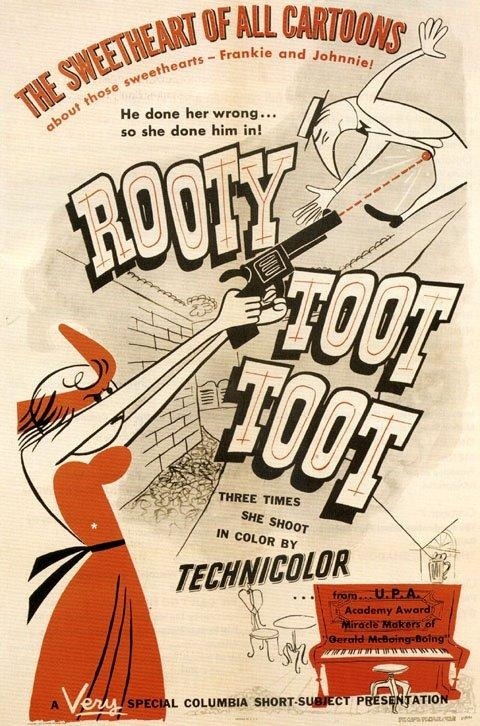
Poster for Rooty Toot Toot.
The short exudes a film noire vibe, its story being a retelling of a now over a century-old tune, Frankie and Johnny. A classic American murder ballad, the song details the murder of an unfaithful pianist by his jilted lover, and the film follows the song very faithfully. The story is presented as a musical courtroom drama, with the testimony of witnesses during the trial of Frankie as flashbacks to the events of the murder. Rooty Toot Toot is notable in animation for the time for the use of adult themes such as sex, violence, corruption, infidelity and ultimately, murder. Although these concepts were not unknown to the animation scene at this point (Fleischer cartoons, for example, often featured some of these concepts) it was still considered quite shocking for the time and as a result, Rooty Toot Toot was withheld from TV syndication for many years.
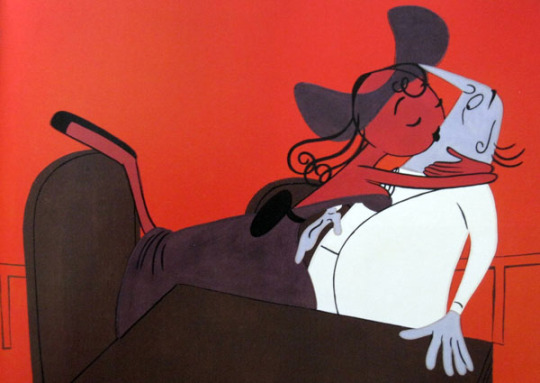
A screenshot of Rooty Toot Toot, featuring the short's highly exaggerated style and use of colour.
What really strikes me upon watching the short, however, is its unique art style. Even by UPA standards, Rooty Toot Toot is unique and experimental. Animated by, among others, Art Babbitt, the original creator of Goofy, and Grim Natwick, animator on Betty Boop for the Fleischer Brothers, the film oozes a Jazzy personality that really adds to the darkly comedic tone. Great care has been given to help establish personality through animation acting in almost every scene. Characters pirouette through their choreography in ballet-like motions (referenced, but not rotoscoped, from poses by dancer Olga Lunick), the put-upon bartender hunches with the weight of the cruel world on his shoulders, Frankie's sweet expressions are quickly replaced by barely-contained fury.

The backgrounds, made by Paul Julian, were created by taking a corroded gelatin roller to produced the distressed look of the dingy, sleazy setting. One thing that strikes me as particularly interesting; characters are often portrayed as "transparent", the bright colours of their garments or the background bleeding through their limbs in an almost cubist or modernist style. The linework is simplistic but clean and clear, and the strong posing really helps characterize the less-than-moral personalities of the story. I think overall it is not unreasonable to say that Rooty Toot Toot was the artistic peak of UPA's catalogue.

Frankie shooting down her attorney.
Unfortunately, not unlike Fantasia, Disney's own ambitious artistry-driven film, Rooty Toot Toot was not the smash success that Hubley had hoped for. Although it did receive an Academy award nomination, it would lose out to The Two Mouseketeers, a Tom and Jerry short. Worse still, not long after its release, the House Committee on Un-American Activities was informed that many of the artists working at UPA were communist sympathizers. Columbia sent a letter to UPA threatening to end the studio's distribution unless the named artists, including John Hubley, publicly denounced communism, and upon his refusal, Hubley was fired from UPA. From that point on the studio floundered and its artistic ambitions, despite its original attempt to distance itself from Disney, ultimately winnowed in the same way Disney's had after the failure of Fantasia.
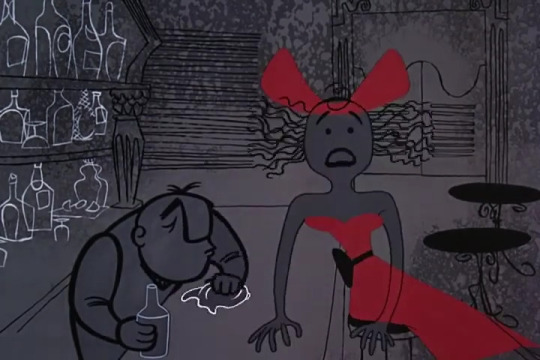
Today, the short is widely acclaimed as one of the most important pieces of independent animation from an American studio ever made. It was voted as one of the 50 Greatest Cartoons of All Time by industry professionals in 1994, and it is still used as a point of reference for animators for posing and personality. Even now, younger generations of artists are still taking inspiration from this extremely unique and engaging piece, over 80 years later.

References:
http://amodernist.blogspot.com/2012/06/rooty-toot-toot-1951.html
https://www.skwigly.co.uk/100-greatest-animated-shorts-rooty-toot-toot-john-hubley/
https://reedart.wordpress.com/2020/03/25/rooty-toot-toot-1951-upa-studios/
https://www.beyondeasy.net/2017/04/animation-april-rooty-toot-toot-1951.html
0 notes
Text
How the Grinch Saved Christmas (For Dr. Seuss)
Dr. Seuss’ How the Grinch Stole Christmas! The Musical will be presented at the Straz Center’s Morsani Hall Nov. 12-17. The musical draws on the children’s book, published 67 years ago on Oct. 12, and also on the 1966 animated special, which featured songs such as “You’re a Mean One, Mr. Grinch.” Author Theodor “Dr. Seuss” Geisel has said the Grinch was inspired by his own holiday spirit being…

View On WordPress
#arts#Broadway#dance#Dr. Seuss#holiday#How the Grinch Stole Christmas#music#performing arts#straz center#straz center for the performing arts#Tampa#The Grinch#theater
1 note
·
View note
Text
How the Grinch Stole Christmas! (1966)

Dr. Seuss’ How the Grinch Stole Christmas! has been adapted for the big screen twice now and the results have never even come close to matching the beautiful simplicity of the 1966 TV special we all know and love. It’s the perfect musical story to get the spirit of the holiday started.
Narrated by Boris Karloff, it’s the story of The Grinch, a hairy green who-knows-what that lives North of Who-Ville and hates Christmas. Determined to ruin the holiday for everyone, The Grinch disguises himself as Santa Claus and descends to the home of the Whos on the night of Christmas Eve to steal every decoration, stocking & present.
I don’t even need to tell you about the songs featured throughout this TV special. You already know them. In fact, you’ve accomplished the impossible if you haven’t heard You’re a Mean One, Mr. Grinch at least once, every single December. That song's lyrics are particularly, wonderfully peculiar and original. The imagery in the rhymes fills your head with smells, textures and colours. If you haven’t memorized them already, you’ll want to so you can describe your least favorite person as a “seasick crocodile”, a "black banana with a greasy black peel" or a “nasty-wasty skunk”.
Matching the immaculate wordplay are terrific sight gags and visuals. The Grinch’s twisted smile - the most twisted, evil smile you’ve ever seen - speaks volumes about his noxious intentions toward the holiday. The way he slinks and slithers through the Who's houses, gleefully ripping decorations off the walls, stuffing presents into his sack and going out of his way to make sure no one will have any joy come morning is so over-the-top you’ve got to laugh. The illustrations in the book by Theodor Seuss Geisel have been brought to life perfectly. It's so well done, in fact, that the idea of someone having a go at it again… feels like pure foolishness. How could you improve upon this?
Well, if you really want to scrutinize things, you could find aspects of the special to improve. For instance, "How the Grinch Stole Christmas!" recycles quite a bit of its footage. It would have also been nice if the budget had allowed for shading instead of flat colours on every character. Oddly, I find this adds to the film's charm. It shows that, people didn't know this production was going to become a yearly tradition for so many people. They didn't go in looking for ways to make it into a franchise, they didn't record the songs hoping they would be hits. It was made solely to be the best version of itself. The results speak for themselves. How the Grinch Stole Christmas! is so effective it’s only through obsessive watching and re-watching that you notice the blemishes.
The immortal songs, iconic images, and clever rhymes of the narration (brought to life by Boris Karloff’s unforgettable voice) all come together at the end to deliver a wholesome, heartfelt message that will resonate with all audiences. If you did somehow manage not to hear some excerpts of How the Grinch Stole Christmas! before December 25th, I'm not sure it would feel like Christmas. (On Blu-ray, December 21, 2019)

#How the Grinch Stole Christmas!#movies#films#movie reviews#film reviews#Chuck Jones#Ben Washam#Boris Karloff#June Foray#Thurl Ravenscroft#Dallas McKennon#1966 movies#1966 films#The Grinch#Christmas Movies#Christmas films
0 notes
Photo
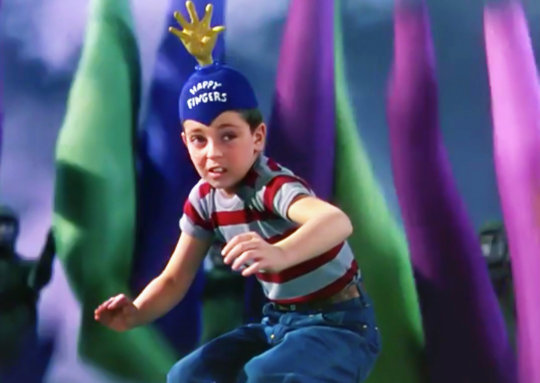
The 5,000 Fingers of Dr. T (1953)
Theodore Geisel, better known as Dr. Seuss, remains best-known for his children’s books. The Cat in the Hat; Green Eggs and Ham; and Oh, the Places You’ll Go! are household names in English-language literature. Seuss’ bibliography overshadows his work in films, beginning with the adapted screenplay of his own book, The 500 Hats of Bartholomew Cubbins (1943) – directed by George Pal as part of the Puppetoons series. During WWII, Seuss was heavily involved in propaganda films and the Private Snafu (1943-1946) military training films. After the war’s end, Seuss returned to writing children’s books, but also continued to write for movies. The Academy Award-winning animated short film Gerald McBoing-Boing (1950) benefitted from Seuss’ story work, and Seuss’ success there inspired him to write a screenplay for a live-action fantasy film. That screenplay – the unwieldy rough draft coming in at over 1,200 pages – was The 5,000 Fingers of Dr. T. The eventual movie, produced by Stanley Kramer (1960’s Inherit the Wind, 1961’s Judgment at Nuremberg) and directed by Roy Rowland (1945’s Our Vines Have Tender Grapes, 1956’s Meet Me in Las Vegas) for Columbia Pictures, would be Seuss’ only involvement in a non-documentary feature film.
Like many who speak English as their first language, Dr. Seuss’ books graced my early childhood. So integral to numerous children’s youth is Seuss that his whimsy, wordplay, and authorial stamps are easily recognizable. In that spirit, the cinematic record of live-action Seuss adaptations consists of the scatological Jim Carrey in How the Grinch Stole Christmas (2000) and the visual nightmare that is Mike Myers as The Cat in the Hat (2003). Compared to the original works, both films are ungainly, casually cruel, and overcomplicated. Not promising company for Dr. T. But even taking into account the three animated feature adaptations of Seuss – Horton Hears a Who! (2008), The Lorax (2012), and The Grinch (2018) – and the fact that Columbia forced wholesale deletions from the rough draft script of Dr. T to achieve a feasible runtime, The 5,000 Fingers of Dr. T is arguably the most faithful feature adaptation to Dr. Seuss’ authorial intent and signature aesthetic.
In other words, this is one of the strangest films you may ever encounter. No synopsis I could write in one paragraph will ever capture the film’s bizarreries.
Little Bart Collins (Tommy Rettig) is asleep during piano practice and his teacher, Dr. Terwilliker (Hans Conried), is furious. His overworked, widowed mother Heloise (Mary Healey) intuits Terwilliker’s unrealistic expectations (Terwilliker wants to teach the next Paderewski) towards Bart’s piano skills and inability to concentrate. Heloise also appears to be quietly eyeing the plumber August Zabladowski (Peter Lind Hayes) and his wrench. With the lesson done for the day, Bart falls asleep again. This time, he dreams that Terwilliker is now the leader of the Terwilliker Institute, a pianist supremacy mini-state which is built upon five hundred young pianist slave boys (hence, 5,000 fingers) forcibly playing Terwilliker’s latest compositions. His mother is Terwilliker’s unwilling, hypnotized assistant and plumber August Zabladowski (Hayes is essentially playing the same character, but in a different world) is Bart’s only ally around. Together, Bart and Mr. Zabladowski must evade the Institute’s guards as they attempt to undermine Terwilliker’s plans for his next concert.
In its final form, The 5,000 Fingers of Dr. T is a muddled mess of a story. The analogues between Bart’s reality and his dreams are inconsistent, several would-be subplots never resolve (or at the very least develop beyond a basic idea), and the film’s initial lightness is subject to rapid mood swings that make this picture feel disjointed. Indeed, Seuss’ sprawling social commentary in his first draft – including allegories and themes of post-WWII totalitarianism, anti-communism, and atomic annihilation – is in tatters in this final product. The viewer will witness brief fragments of those ideas, remaining in this movie as the barest of hints of the contents of the original screenplay’s rough draft. Even now, Dr. T inspires psychiatric analyses and accusations that Bart’s relationship with his mother reveals signs of an Oedipal complex (to yours truly, the latter is too much of a reach). The grim nature of Terwilliker Institute renders Dr. T unsuitable for the youngest children. For older children and adults, try going into this movie without expectations of narrative logic and embrace the grotesque aspects that only Seuss could imagine.
If my attempts to describe this movie’s preposterousness through its narrative and screenwriting approach have failed, perhaps I can capture that for you by writing on its technical features.
youtube
For its sheer narrative inventiveness – inconsistencies, abrupt tonal shifts, nonsense, and Rowland’s uninspired direction aside – The 5,000 Fingers of Dr. T is nevertheless an ambitious film, and Columbia bequeathed a hefty budget to match that ambition. Much of that budget went to the film’s visuals. This is an extravagantly-staged motion picture, as nothing could do Dr. Seuss’ illustrations justice without fully committing to his geometric impossibilities: skyward ladders and improbable connections between rooms, an eschewal of right angles and straight lines, and architecture bound to raise the ire of physics teachers. One could compare this to German Expressionism, but Dr. T’s sets tend not to dictate the film’s mood nor are they subject to high-contrast lighting. Seuss went uncredited as the concept artist on Dr. T, and it was up to Clem Beauchamp (1935’s The Lives of a Bengal Lancer, 1952’s High Noon) and the uncredited matte artists to commit those visuals to the real world. Outside of animated film, Beauchamp and the matte artists succeed in creating twisted sets that seem to leap off the pages of Seuss’ most artistically interesting books. Some of the sets appear too stagebound, but the production design accomplishes its need to resemble a world borne from a fever dream (or, at least, a young pianist’s nightmare).
This movie’s outrageous costume design (other than Jean Louis’ gowns for Mary Healey, the costume designer/s for this film are uncredited) comprises absurd uniforms and two of the most ludicrous hats – the “happy fingers” cap (see photo at the top of this write-up) and whatever the hell Terwilliker dons in the film’s climax – one might ever see in a film. Most of the costumes are laughably impractical and ridiculous to even those without fashion sense. In what might be the tamest example, while working under Terwilliker, Bart’s mother wears a suit that is all business formal on the left-hand side and bare-shouldered, sleeveless, and nightclub-y on the right. The delineation of real life – which barely features in the film’s eighty-nine minutes – and this world of Bart’s dreams could not be any more unambiguous thanks to the combination of the production and costume design work.
The disappointing musical score by Fredrich Hollaender (1930’s The Blue Angel, 1948’s A Foreign Affair) and song lyrics by Seuss rarely connects to the larger narrative unfolding. Seven songs make the final print, with nine (yikes!) Hollaender-Seuss songs ending up on the cutting room floor. Seuss’ wordplay is evident, as are Hollaender’s melodic flourishes. Columbia, a studio not known for its musicals, assembled a 98-piece orchestra – the largest musical ensemble to work on a Columbia film at the time – for The 5,000 Fingers of Dr. T alone. That lush sound is apparent throughout for the numerous nonsense songs that color the score in addition to the incidental score. It is unusual to listen to a collection of novelty songs orchestrated so fully. Listen to “Dressing Song: Do-Mi-Do Duds” and its complicated, seeming unsingable lines:
Come on and dress me, dress me, dress me In my peek-a-boo blouse With the lovely inner lining made of Chesapeake mouse! I want my polka-dotted dickie with the crinoline fringe For I'm going doe-me-doe-ing on a doe-me-doe binge!
The rich orchestration seems to hail from a more lavish film. But too many of these songs are scene-specific, and rarely does Hollaender utilize musical quotations from these songs into his score. “Get Together Weather” is delightful, but it seems so isolated from the rest of the film; elsewhere, “The Dungeon Song” exemplifies a macabre side to Seuss seldom appearing in his books. Nevertheless, Hollaender is able to demonstrate his playfulness across the entire film, none moreso during any scene with the bearded, roller-skating twins and the “Dungeon Ballet”, in which the music complements stunning choreography and fascinating props that recall the jingtinglers, floofloovers, tartookas, whohoopers, slooslunkas, and whowonkas from the Christmas television special How the Grinch Stole Christmas! (1966). Yet, Hollaender’s film score and the soundtrack with Seuss seems to demand something – anything – to tie the entire compositional effort together. Perhaps a song or some cue like that was cut from the film, which is ultimately to its detriment.
Hans Conried (who starred as Captain Hook in Disney’s Peter Pan several months prior to Dr. T’s release) stands out from a decidedly average Peter Lind Hayes and Mary Healey – Hayes and Healey, in a sort of in-joke, were married. Conried’s performance as the sadistic, torture- and imprisonment-happy music teacher can be considered camp, but this is anything but “bad” camp. He throws himself completely into this cartoonish role, sans shame, complete with mid-Atlantic accent, and topped off with exaggerated facial and physical acting that fits this fantasy. As Bart, child actor Tommy Rettig (best known as Jeff Miller on the CBS television series Lassie) seems more assured in his performance than most child performers his age during the 1950s. His fourth wall-breaking asides seem more appropriate in a Bugs Bunny cartoon, but Rettig makes it work, and inhabits Bart’s flaws wonderfully.
Columbia demanded numerous reworkings of Seuss’ script, leading to several reshoots – most notably the opening scene (Seuss opposed the conceit of Bart’s dream framing the film) – and a ballooning budget. Upon its release in the summer of 1953, The 5,000 Fingers of Dr. T bombed at the box office and was assailed by critics. A crestfallen Seuss, who could not stand the production difficulties that beset the film from the start of shooting, would never work in feature films again. He would dedicate himself almost entirely to writing and illustrating children’s books, with many of his most popular titles (including The Cat in the Hat, One Fish Two Fish Red Fish Blue Fish, and Green Eggs and Ham) published within a decade of Dr. T’s critical and commercial failure. His hesitance to participate in filmmaking informed his reluctance to allow Chuck Jones to adapt How the Grinch Stole Christmas! thirteen years later. Animation suited his books, Seuss thought, and he would never again pay any consideration to live-action filmmaking.
The reevaluation of The 5,000 Fingers of Dr. T has seen a rehabilitation of the film’s image in recent decades. Home media releases and television showings have introduced the film to viewers not influenced by the hyperbolic negativity of the film critics working in 1953. This is not a sterling example of Old Hollywood fantasy filmmaking, due to a heavily gutted screenplay, scattershot thematic development, and incongruent musical score. Yet, the movie’s surrealistic charms and Seussian chaos know no peers, even in the present day.
My rating: 7/10
^ Based on my personal imdb rating. My interpretation of that ratings system can be found in the “Ratings system” page on my blog (as of July 1, 2020, tumblr is not permitting certain posts with links to appear on tag pages, so I cannot provide the URL).
For more of my reviews tagged “My Movie Odyssey”, check out the tag of the same name on my blog.
#The 5000 Fingers of Dr. T#The 5000 Fingers of Dr. T.#Dr. Seuss#Roy Rowland#Peter Lind Hayes#Mary Healy#Hans Conried#Tommy Rettig#Allan Scott#Stanley Kramer#Frederick Hollander#Rudolph Sternad#Cary Odell#William Kiernan#TCM#My Movie Odyssey
16 notes
·
View notes
Link
LETTERS FROM AN AMERICAN
October 1, 2021
Heather Cox Richardson
For those of you exhausted by this week’s news, you can take a break tonight. Lots of moving pieces are in play, but nothing that would hold a historian to her desk a hundred years from now, so skip this letter with a clean conscience.
For those of you who do want some reflections, I am struck today by the media’s breathless recounting of how the ongoing negotiations over the two infrastructure bills shows that the Democrats are in disarray and President Joe Biden’s agenda is crashing and burning. The New York Times called a delay in the vote on the measures “a humiliating blow to Mr. Biden and Democrats” and wondered if “Biden’s economic agenda could be revived.”
Exactly a year ago, the news reported that Trump adviser Hope Hicks had coronavirus and that she had recently traveled with White House personnel on Air Force One. The stock market dropped 400 points on the news. The previous day had been the infamous presidential debate when Trump yelled and snarled at Biden, while his entourage, including Hicks, refused to wear masks despite a mandate that they must do so. We did not know who else might be infected.
Hours later, we learned that the president and First Lady were both sick, and within hours the president would be hospitalized.
The rest of the news provided a snapshot of the Trump presidency:
•A study of more than 38 million English-language articles about the pandemic between January 1 and May 26 showed that Trump was “likely the largest driver of…Covid-19 misinformation.”
•Trump’s former national security adviser, retired Lt. General H.R. McMaster, told MSNBC that Trump was “aiding and abetting Putin’s efforts” to disrupt the November election.
•We learned that Amy Coney Barrett, Trump’s nominee for the Supreme Court, had not disclosed that in 2006, she signed an anti-abortion ad in the South Bend Tribune. It appeared near another ad from the same organization that called for putting “an end to the barbaric legacy of Roe v. Wade and restore laws that protect the lives of unborn children.”
•A tape leaked of Melania Trump complaining about having to decorate the White House for Christmas—“I’m working… my a** off on the Christmas stuff, that you know, who gives a f*** about the Christmas stuff and decorations?”—and then said of criticism that she was not involved with the children separated from their parents at the southern border: “Give me a f****** break.”
•News broke that Donald Trump, Jr.’s girlfriend, Kimberly Guilfoyle, had left the Fox News Channel after an employee complained of sexual harassment, saying she required the employee to work at her apartment, where she would sometimes be naked, and where she would share inappropriate photos of men and discuss her sexual activities with them. She denied any misconduct, but FNC settled the case against her for $4 million.
•The House of Representatives, controlled by Democrats, passed a $2.2 trillion coronavirus relief measure. No Republicans voted for it.
•Right-wing conspiracy theorists Jacob Wohl and Jack Burkman were charged with four felonies in Michigan for intimidating voters, conspiring to violate election laws, and using a computer to commit a crime.
•Claiming he wanted to prevent “voter fraud,” Republican governor Greg Abbott of Texas limited the number of locations for dropping off mail-in ballots to one site per county. While Republican counties tended to have just one location already, Democratic Harris County, the third largest county in the country, with a population of more than 4.7 million and an area larger than the state of Rhode Island, had previously used 12. Democratic Travis County, which includes Austin, previously had four.
That was one single day in the Trump presidency.
In contrast, today, the Democrats are trying to pass an extremely complicated package, consisting of two major infrastructure bills, backed by different constituencies, that will alter the direction of our country by investing in ordinary Americans and revising the tax code to claw back some of the 2017 tax cuts the Republican Congress gave to corporations and the very wealthy. Although there is no guarantee they will pass, the bills are currently still on track, and all the relevant parties are still at work discussing them, exactly as one would expect.
What is the unusual piece in this process is that the other major American political party—the Republicans—is refusing to participate in the crafting of a major bill that is extremely popular.
This infrastructure package is huge, but it is hardly the only item in Biden’s agenda. In March 2021, the Democrats passed the American Rescue Plan, a $1.9 trillion economic rescue package that has helped the administration produce more jobs in its first six months than any other administration in American history.
Not a single Republican voted for that bill; it passed while they were focusing on the ungendered Potato Head kin and the decision of the Dr. Seuss estate to stop the publication of some of Theodor Geisel’s less popular books.
The economy has recovered in large part because of the Biden administration’s enormous success at distributing the coronavirus vaccines to every American who wanted one.
Republican lawmakers have worked against this process, and today we crossed the unthinkable line of 700,000 officially counted deaths from Covid-19.
Now, the administration has begun to put vaccine mandates into effect, and they are working. Those who insisted they would never get vaccines changed their minds when employers and public venues required them. Today, California governor Gavin Newsom announced that the state will require coronavirus vaccines for school children, along with the ten others it already requires, as soon as the Food and Drug Administration fully approves them for use in children.
Meanwhile, Republican-dominated state legislatures are following through on the voter suppression noted a year ago, passing measures to cut down Democratic voting and install Republican operatives in key election posts before the 2022 election.
As political scientist and foreign relations expert David Rothkopf tweeted: “Are the Dems the ones in disarray when they are crafting specific programs while the GOP offers up only cynical Tweets & obstruction? The only GOP agenda items are voter suppression, defending the worst president in history & when they have power, pushing tax cuts for the rich.”
For my part, I’m not sure what is driving the stories that seem to paint Biden’s work as a lost cause: The recent position that Democrats are hapless? That it’s safer to be negative than positive? That our news cycle demands drama?
Whatever it is, I continue to maintain that the issue right now is not Democrats’ negotiations over the infrastructure bills—regardless of how they turn out—but that Republican lawmakers are actively working to undermine our democracy.
—
Notes:
https://www.washingtonpost.com/politics/2021/06/24/nightmare-scenario-book-excerpt/
https://www.nytimes.com/2020/10/01/us/amy-coney-barrett-abortion.html
https://www.cnn.com/2021/10/01/us/california-students-covid-vaccine-requirement/index.html
https://www.newsweek.com/texas-ag-says-trump-wouldve-lost-state-if-it-hadnt-blocked-mail-ballots-applications-being-1597909
https://www.nytimes.com/2021/09/30/us/politics/infrastructure-democrats-pelosi.html
David Rothkopf @djrothkopfThe NYT does it again: "House Delays Vote on Infrastructure Bill as Democrats Feud." On the homepage they call it a "Big Setback for the Biden Agenda." Really? Really? A day? A couple of days? The media is getting this story 100% wrong.
House Delays Vote on Infrastructure Bill as Democrats FeudA liberal revolt left Democrats short of votes, but leaders insisted they would bring up the measure again on Friday, giving them more time to reach a deal on a separate climate and safety net bill.nytimes.com
2,463 Retweets9,500 Likes
October 1st 2021
LETTERS FROM AN AMERICAN
HEATHER COX RICHARDSON
#Politics#history#perspective#Heather Cox Richardson#Letters From an American#the news#legislation#fairness#last year
5 notes
·
View notes
Text
You're a Mean One, Mister Grinch — VoicePlay music video
youtube
There have been many film versions of the Grinch's story over the years. But whether they've been animated or live-action, all of the more recent adaptations have included the music from the original 1966 movie narrated by Boris Karloff, and for good reason. Those songs are classics. VoicePlay reunited with Adriana to put their own twist on the title track berating the story's grumpy protagonist, and it's a heck of a good time.
Details:
title: You're a Mean One, Mr. Grinch (feat. Adriana Arellano)
original performer: "You're a Mean One, Mr. Grinch" by Thurl Ravenscroft & "Welcome Christmas" by the MGM Studio Chorus in How the Grinch Stole Christmas! (1966)
written by: lyrics by Theodor "Dr. Seuss" Geisel; music by Albert Hague
arranged by: Geoff Castellucci
release date: 26 November 2020
My favorite bits:
starting with a bit of gentle caroling in "Welcome Christmas"
"Well you were flat… and stinky." 😡
the swingy rhythms and jazzy harmonies they added
Geoff clearly enjoying that he got to bust out his Thurl Ravenscroft impression again
the airy flatulent sound Layne put after ♫ "really are a heel" ♫
the slow bell chord on ♫ "Griiinch" ♫ from the standing trio
Adriana putting a bit of a sneer into ♫ "You're a wild one, Mr. Grinch." ♫
such nimble riffing from J.None on ♫ "seasick crocodiiile" ♫
Geoff subtly finishing the chorus with a quiet, deep ♫ "Grinch" ♫
Eli's delicate timbre for ♫ "whistled and shouted and" ♫
their repeated prompt of ♫ "called them by name" ♫ and the silly cutaway interlude 🐶
that crisp stacatto on ♫ "You are just not very nice." ♫
Adriana nimbly switching between her chest and head registers during ♫ "heart is full of unwashed socks, your soul full of gunk" ♫
hygiene bros Eli and J declaring ♫ "You need a baaath" ♫ 🤗 (Did they keep the tub from "Sandy Claws"?)
the lovely legato harmonies on ♫ "king of sinful sounds" ♫
Layne rattling off that dialogue in… whatever accent it's supposed to be (French? Alsatian? Austrian?), and the others glancing furtively at the camera as they hold those long notes underneath
that big old belt from Geoff on ♫ "tangled up knooots" ♫ and the subsequent octave drops as he repeats ♫ "Mr. Grinch" ♫
the crunchy descending riff from the trio on their third repetition of ♫ "You're a mean ooo-o-o-o-o-ooone" ♫
the jazzy scatting as they close in on their adversary
Group hug! — particularly Layne nuzzling the Grinch's cheek as he grumbles about it lasting "too long" and being "embarrassing"





Trivia:
As is the case for most of their guest characters' dialogue, the Grinch is voiced by Eli.
The guys are committed to not revealing the identity of the performer in the Grinch costume, presumably because he also portrays the character at Universal Studios and maintaining the illusion is a contractual obligation.
All the prosthetics made for a long day of filming. While they were waiting for everyone to complete their transformations, some of the guys did a bit of modelling for the Morphstore website.



All of the Who noses, Grinch prosthetics, and makeup were provided by special effects artists Dana Bracewell, Lia Malamo, and Andy Wright from Makeup and Creative Arts. To pass the last few minutes in the chair, the Grinch performer recorded a few brief video messages that the MCA team put on their Instagram.
instagram
instagram
instagram
The only lyrics from the original version that VoicePlay didn't include are the final verse: "You nauseate me… Mister Grinch. With a nauseous super-naus! You're a crooked jerky jocky and you drive a crooked hoss, Mister Griiinch!"
This is an uncommon instance in which VP made a dedicated trailer clip rather than simply teasing footage from the final video.
instagram
Their buddy Chris Rupp (formerly of Home Free and currently of Cypress Fyre) had come by the studio to visit while he was in town, and was suitably impressed by the lengths they go to when bringing their visions to life.

Speaking of Home Free, they released their own rendition of the song five years later with a more modern twist on the framing for their video.
Geoff donned the antler headband to perform a portion of this song in Peter Hollens's "Epic Christmas Movie Medley", which was released a few weeks later.
An excerpt of "Welcome Christmas" was part of VoicePlay's "Most of the Songs" medley that they performed at holiday shows, including their three annual residencies in Mickey's Very Merry Christmas Party at Disney World.
The adorable carrot pin on Layne's jacket lapel during the Who segments was a piece of limited-edition merch that they released the next day.
J.None's vocal coaching colleague Tara Simon made a reaction video for this on her YouTube channel, and J went extra meta by reacting to her reaction.
youtube
Layne and his family recorded their own version of the song the following year with uncle Tony donning the title character's costume and surly attitude.
PattyCake also featured The Grinch in their 2022 holiday video parodying "It's the Most Wonderful Time of the Year".
2 notes
·
View notes
Photo




Top: Drawing by Chuck Jones of a few session musicians at the sound recording of “Dr. Seuss’ How the Grinch Stole Christmas”, 1966.
2nd: Drawing by Chuck Jones used for publicity purposes for the promotion of his “Dr. Seuss’ How the Grinch Stole Christmas”, 1966.
3rd: Chuck Jones, standing, with Boris Karloff, during the sound recording of the animated television special, “Dr. Seuss’ How the Grinch Stole Christmas”, 1966.
4th: Back row from left, Dr. Seuss (Ted Geisel), Thurl Ravenscroft (singer of “You’re a Mean One, Mr. Grinch”, and coincidentally, the voice of Tony the Tiger), and Eugene Poddany, orchestra conductor and arranger of the music for the animated film. Front, Les Goldman, producer.
#Chuck Jones#artists on tumblr#Dr. Seuss' How the Grinch Stole Christmas#sound recording#Dr. Seuss#Ted Geisel#Thurl Ravenscroft#Eugene Poddany#Les Goldman#session musicians#drawings
172 notes
·
View notes
Text
The Grinch You're A Mean One Mr Grinch EASY solo piano arr by Dr Seuss and Albert Hague (sheet music)

The Grinch You're A Mean One Mr Grinch EASY solo piano arr by Dr Seuss and Albert Hague (sheet music)Best Sheet Music download from our Library.Please, subscribe to our Library. Thank you!The Grinch - History"You're a Mean One, Mr Grinch" ~ Dr Seuss (The original song)Lyrics:Browse in the Library:

The Grinch You're A Mean One Mr Grinch EASY solo piano arr by Dr Seuss and Albert Hague (sheet music)
https://youtu.be/Pg0Nd8fH1mk?si=BLJXsNM-sZtcT57_

The Grinch - History
"You're a Mean One, Mr. Grinch" is a Christmas song that was originally written and composed for the 1966 animated special Dr. Seuss' How the Grinch Stole Christmas!. The lyrics were written by Theodor "Dr. Seuss" Geisel, the music was composed by Albert Hague, and the song was performed by Thurl Ravenscroft. Because Ravenscroft was not credited in the closing credits of the special, it is often mistakenly attributed to Boris Karloff, who served as narrator and the voice of the Grinch in the special but is not a trained singer. Until Ravenscroft was publicly credited, Tennessee Ernie Ford was also speculated to be the voice behind the song. The soundtrack to the special won the Grammy Award for Best Album for Children at the 10th Annual Grammy Awards.

The song has been incorporated into most other adaptations of the story. In the 2000 live-action film, Jim Carrey performs the song in character as the Grinch, singing about himself. The stage musical adaptation included the song in the score, among several other original numbers composed specifically for that production. The 2018 CGI animated film features a substantially updated version of the song from Tyler, the Creator featuring an orchestral arrangement by Danny Elfman. The song was also covered by New Jersey alternative rock band the Whirling Dervishes. Writer Chris Jordan of the Asbury Park Press called their version "wonderfully depraved in the best of holiday ways" and noted that their version became a 'Jersey' classic. Other artists who have recorded versions include Cee Lo Green with Straight No Chaser, Tyler, The Creator, Mojo Nixon, Aimee Mann, Pentatonix, Jordan Smith, Misfits, Kidz Bop Kids, Darius Rucker, That Handsome Devil, Burl Ives, Lindsey Stirling, Dweezil Zappa, Deanna Kirk, Rachel Platten, k.d. lang, Darius Rucker and Dailey & Vincent. "You're a Mean One, Mr Grinch" ~ Dr Seuss (The original song) https://www.youtube.com/watch?v=3Hj3U18FHgQ Lyrics: You're a mean one You really are a heel You're as cuddly as a cactus You're as charming as an eel Mr. Grinch, you're a bad banana Mr. Grinch, with the greasy black peel You're a vile one You got termites in your smile You have all the tender sweetness Of a seasick crocodile Mr. Grinch You're a foul one Friends you don't have none I wouldn't touch you with a 39-and-a-half foot pole! You're a monster Your heart's an empty hole You're a goner You got garlic in your soul You got garlic in your soul All them smiles homie I turn up the frown All them decorations I tear em down You can ask Max, I don't play around Ayo, eww Who is this mean fellow With his skin all green and his teeth all yellow? (Eww) What you so mad for? Halloween come around and we ain't knockin' at your door, mane Mr. Grinch you're a bad banana You're gonna spoil everybody with your bad attitude (Spoil everybody) Mr. Grinch La-la-la-la Who is this mean fellow With his skin all green and his teeth all yellow? (La-la-la-la) What you so mad for? Halloween come around and we ain't knocking on your door (La-la) Bad banana Read the full article
#SMLPDF#noten#partitura#sheetmusicdownload#sheetmusicscoredownloadpartiturapartitionspartitinoten楽譜망할음악ноты
0 notes
Quote
There are some true gems among the Dr. Seuss books, but this isn't one of them. Fails both as poetry (the lines don't scan) and as onomatopoeia - "splatt" for lightning? Dreadful. I'm truly astonished to find that, nearly forty years since its first publication (1970), we're still wasting trees on this. Try either Dr. Seuss's ABC or Sandra Boyton's "Moo Baa La La La" for an infinitely superior alternative.
Amazon Customer reviews Mr. Brown Can Moo, Can You?
#mr. brown can moo can you?#dr. seuss#theodore geisel#fails both as poetry and as onomatopoeia - 'splatt' for lightning?#dreadful#we're still wasting trees on this
1 note
·
View note
Text
You Are Mean Ones, Nightmare Gang
You’re a mean one, Nightmare Sans Negativity your meal You're as cuddly as a tar pit, tentacles that look like eel, Nightmare Sans You're a bad banana that is goopy unpeeled! You're a monster, Horror Sans Cracked head with empty hole Your skull is full of spiders, you've got LV in your SOUL, Horror Sans I wouldn't touch you with a thirty-nine-and-a-half foot pole! You're a vile one, Murder Sans Monster Dust caked on your pants You have all the tender sweetness of the drunken Jerry rants, Murder Sans Given a choice between the two of you I'd take the drunken Jerry rants! You're a foul one, Killer Sans You're a nasty-wasty skunk Your thoughts are sweet as unwashed socks, your SOUL is full of gunk, Killer Sans The three words that best describe you are as follows, and I quote "Stink, stank, stunk!" You're a voyeur, Error Sans You destroy AUs a ton You spy on all the Sanses and make dolls of everyone, Error Sans Your Void is an appalling dump heap overflowing with the most disgraceful Assortment of deplorable rubbish imaginable, tangled up in Blue Strings! You nauseate me, Nightmare Gang With a nauseous super "naus"! You're a crooked dirty Sans group with a crooked goopy boss, Nightmare Gang You're a three decker sauerkraut and toadstool sandwich with arsenic sauce!
"You're a Mean One, Mr. Grinch" is a Christmas song that was originally written and composed for the 1966 cartoon special Dr. Seuss' How the Grinch Stole Christmas! The lyrics were written by Theodor "Dr. Seuss" Geisel, the music was composed by Albert Hague, and the song was performed by Thurl Ravenscroft.
#undertale#undertale_au#nightmare sans#horror sans#error sans#killer sans#murder sans#dust sans#grinch#christmas
39 notes
·
View notes
Video
youtube
Dr. Seuss' How The Grinch Stole Christmas: The Musical ...the ONLY review that matters!
Uploaded by BroadwaySF on December 22nd 2011
Description:
While we packed up our lunches to head to the office, Guess Who found his way with bold brazen brashness? Up the stairs to our drives to review his OWN show, No one else but the Grinch with distinct praise to bestow.
"You're a Mean One, Mr. Grinch"
Lyrics: Theodor "Dr. Seuss" Geisel
Music: Albert Hague
Performed by: Thurl Ravenscroft
#stefan karl stefansson#stefán karl stefánsson#2011#How The Grinch Stole Christmas#youtube#stefan karl#stefán karl
7 notes
·
View notes
Video
youtube
A listener comments about his frustration with Stan’s opinions about art history. It prompts a longer discussion about the benefits of studying history. Jazza didn’t sponsor this episode, but we unbox his Jazzy Art Box.
Call and Ask Your Art Questions: 1-858-609-9453
Some showlinks contain affiliate links to amazon.com: Mixergy - https://mixergy.com/ Ken Burns (The Civil War, The West, Empire of the Air) - https://amzn.to/32D32Pz Dan Carlin's Hardcore History - https://www.dancarlin.com/hardcore-hi... Robert McKee story workshop - https://mckeestory.com/seminars/story/ Dr. Seuss and Mr. Geisel: A Biography - https://amzn.to/2N93Qb0 Burne Hogarth - https://amzn.to/2LmBDeU Jazza - https://www.youtube.com/user/DrawWith... Jazza’s Jazzy Art Box - https://smartartbox.com/pages/jazzy-a... Visions of Light - https://amzn.to/2NRJAdJ Artists Mentioned in this Podcast: John Everett Millais, John William Waterhouse, William-Adolphe Bouguereau, Solomon Joseph Solomon, Jack Hamm, Andrew Loomis, Stephen Peck, Norman Rockwell, J.C. Leyendecker, Jeremy Lipking, Craig Mullins, Drew Struzan, John Singer Sargent, Joaquín Sorolla, Norman Rockwell, Frank Frazetta, Rembrandt, Honoré-Victorin Daumier, Jacopo da Pontormo, Paul Cézanne, Edgar Degas, Claude Monet, Michelangelo, and Alphonse Mucha - https://proko.com/347
“Draftsmen” is available in audio. Subscribe on these platforms to keep up to date:
Spotify: http://bit.ly/DraftsmenPodSp Stitcher: http://bit.ly/2JLMShh Apple: http://bit.ly/DraftsmenPodA Google: http://bit.ly/DraftsmenPodG
10 notes
·
View notes
Photo
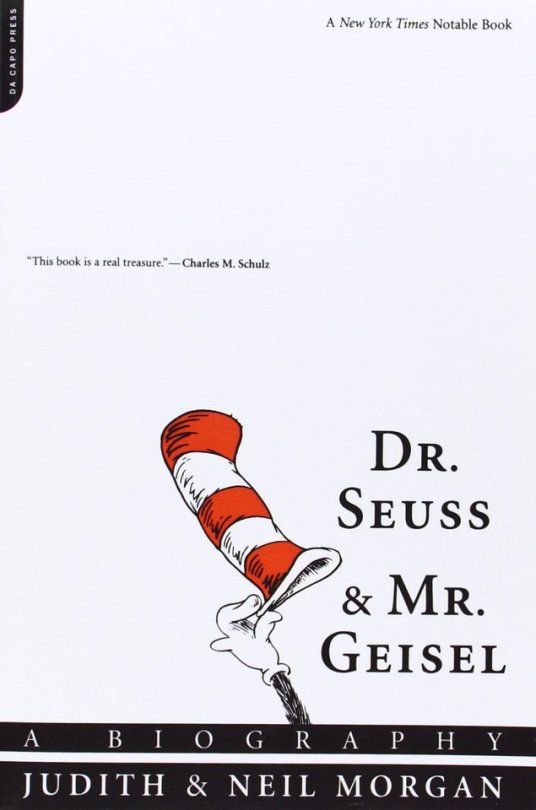
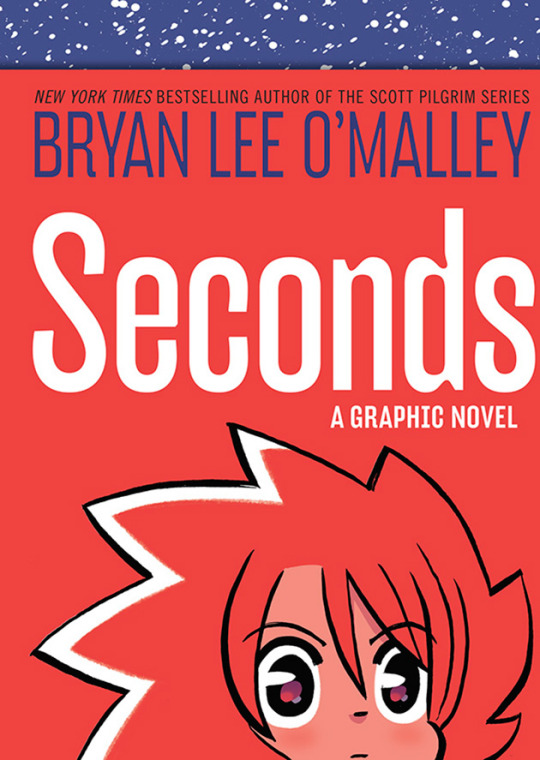

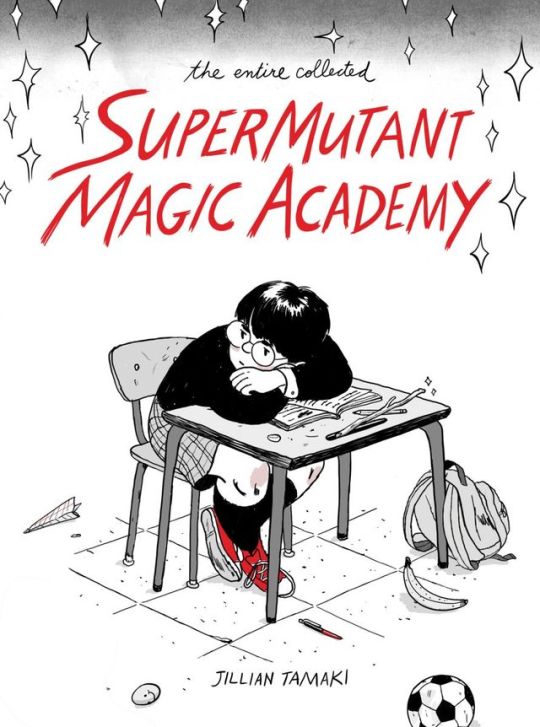
January was a weird month. I went through the first few days of 2017 feeling like I was coming down from a hangover of 2016, and I wish I meant that literally (I stayed in on New Year's Eve, partly because my mother spent the day at the hospital, partly because screw the idea of celebrating 2016). And then January just kept on going, and it just got weirder and weirder. You know what I'm talking about.
So I wanted to start out my reading year as gently as possible. I don't think I could have handled anything else. I wanted to pick out books that, to me at least, seemed warm and inviting.
Dr. Seuss & Mr. Geisel by Judith and Neil Morgan seemed like it fit the bill. I had already been inspired by kaptainkristian's superb video essay on Dr. Seuss and his rhyming techniques to finally pick this up (it had been sitting on my shelves for a while). Writer biographies are among my favorite things to read, anyway, so this seemed like a good place to start.
And it was. And it was indeed a gentle book, too -- although this didn’t always work to it’s advantage.
The Morgans were apparently good friends and neighbors of the Geisels, and so had access to a wealth of information and intimacies that would not have been available to many other would-be biographers. And this very much shows through in the book -- it reads very intimate. It’s an admiring and affectionate look at the life and labors of a well-beloved author.
A bit too admiring and affectionate at times, it turns out.
This is a mostly thorough book, covering Geisel's work from a very young age, up to college and adulthood and beyond. This life work is divided into chapters covering whatever big work Geisel was putting out that year (he really was a prolific man). A couple of these deal heavily with Geisel's political cartoons he created during the Second World War. The Morgans are quick to praise their artistry and ingenuity as well as the influence that they held, all the while glossing over the fact that a lot of them happened to also be extremely racist and anti-Japanese. This is a fact of Dr. Seuss that I had known for a while, and so I was on the look-out for discussion about it within the book. Alas. I wanted to make note of this in light of the fact that some of these cartoons have recently regained some prominence, given certain current events.
One other instance of the book being too gentle on its subject has to do with the chapter covering the death by suicide of Helen Palmer -- Geisel's first wife and a children’s author in her own right. It's a sad and somber account, and you feel like the the authors are writing about the death of an actual friend and person, and of a subject, which is commendable. I learned later, though, that one of the major reasons Helen decided to take her own life was the fact that Geisel was apparently having an affair with one of their close friends -- the same woman that later became his second wife. This is, given the Morgans relationship with the Geisels, an understandable enough omission, to be sure, but it is also a very glaring one in retrospect.
And I guess an argument could be made about the ethics and moralities of having such personal things in a book that, to be fair, largely focuses on the creative aspect of its subject. But I'm of the opinion that unpleasant details like this should be acknowledged and discussed. Especially so in biographies of well-known and well-loved. They are the things that show us that the people we admire are every bit as flawed and damaged as the rest of us, but are still capable of making the occasional magic.
Those are just two examples that I thought were interesting to think about. As I said, though, the bulk of the book deals with the creative work of an imminently fascinating and intensely prolific figure, and it does so wonderfully -- the chapters dealing the creation Seuss's "major" books being particularly illuminating.
Dr. Seuss was and still is an influential and inspiring figure, warts and all. He was an artist -- a proper artist -- who did a tremendous amount of good, not just for children’s literature, but for literature in general. And he was, much like the Cat in the Hat, a trickster figure, larger than life itself. Large enough to cast a deep shadow over an entire industry.
It’s just important to recognize the rest of it all, too.
Seconds by Bryan Lee O'Malley was the second book I read this year -- something that was completely unintentional but still greatly pleases me. Lost at Sea was the third. Both were re-reads.
Seconds is about Katie Clay, head chef of a relatively successful restaurant who dreams of one day opening up her own. After a series of setbacks that keeps delaying this dream she is visited by a house spirit who gives her the ability the change past mistakes by ingesting some mushrooms.
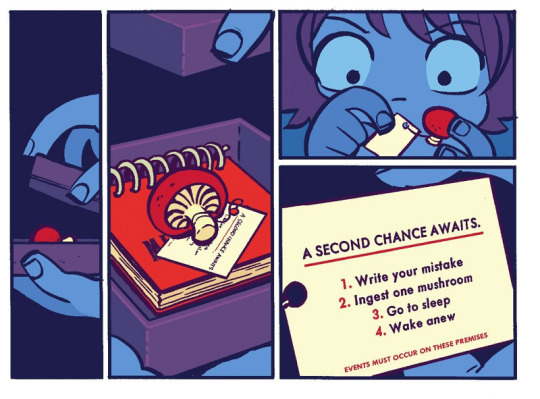
So, you know, hardcore realism.
O'Malley's books seem to come into my life at pivotal moments. Scott Pilgrim was a very formative book for me: I was an insufferable hipster kid with insufferable hipster friends, and was close enough to the age of the characters that I saw my life reflected on its cartoony pages -- which was an interesting and dissecting kind of experience, to say the least. It's a hell of a thing to see a reflection of yourself in the hero of a story only to realize that both the hero and yourself have actually been complete and utter gits all this time ha ha ha let me tell you.
Seconds also came out at an age-appropriate time, and again I saw myself reflected in the main character, Katie, with her dreams and her passions and her fear of failure and mundane complacency. I was in my second year of a projected three-year stint at an office job, but, much like Katie and her bigger and fancier restaurant, I had higher and loftier aspirations.
When I came to re-read it a couple of weeks ago, I was closer to the character not only in terms of age (we were both 29 now), but in situation as well. I was still at my office job (fifth year of the projected three year stint) and while being extremely good and efficient at it, and appreciating the job’s relative safety, I found myself, like Katie, being frustrated by the mundane realities and setbacks of life. Trying to keep up with dreams is a challenge, but I wish it didn't always have to feel that way. It's exhausting.
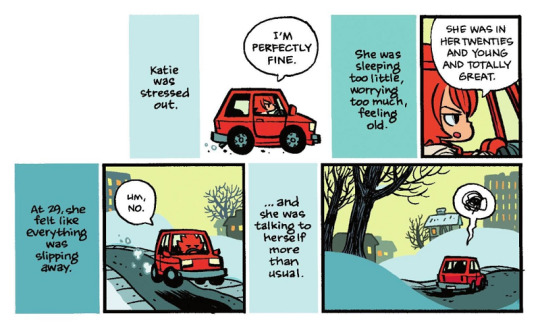
Seconds is a story about taking control of your narrative at the expense of other people, and the meaning and consequences of it. It's a story about do-overs and what-ifs and what-might-have-beens. The main character finds all this out via the use of magic mushrooms, and while I'm not exactly fitting to go out into the real world in search of some enchanted fungi, I'm not going to say I wouldn't do the same as Katie did were I to come across such a thing.
This was, I believe, my third time reading the book. I've taken away something new after each read, and my love for it keeps growing exponentially. It's definitely O'Malley's most mature work, both in terms of themes and story, as well as art -- combining his hyper-graphic, chibi style of cartooning with the semi-realistic backgrounds and props of Jason Fischer and the gorgeous expressionist coloring of Nathan Fairbairn.

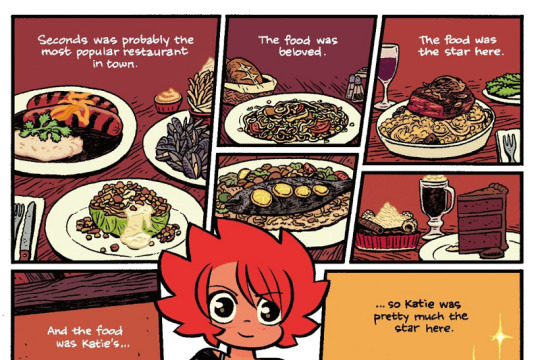
They all compliment and enhance each other so well. Seconds has become my favorite of Bryan's books.
Lost at Sea is the only O'Malley book I've read at a time when I wasn't anywhere close to the age of the characters, since they are all teenagers. And this is very much a teenager story, all about trying to find yourself and the embarking on road trips in order to do so. It's a story about that deep and lonely aimlessness all moody and sensitive adolescents inevitably feel.
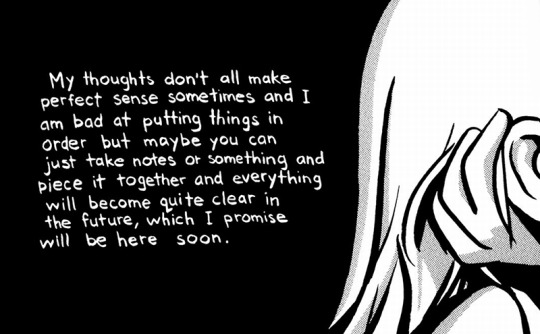
It’s a feeling that we never really manage to outgrow, the vestiges of which manage to remain etched onto our aging souls, surfacing mostly during terribly long and existential nights. I was very much feeling when I first picked it up last year, and I was still feeling that when I decided to read it again this year. It helped both times. One of those books you read as an adult and wish you could go back in time and make a younger version of you read it as well. Maybe with the help of some mushrooms....
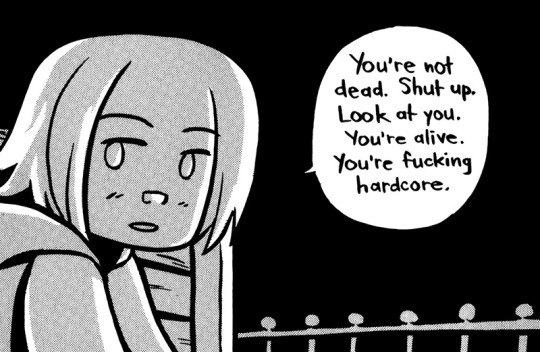
I love Bryan Lee O'Malley's books a lot. I hope he keeps making them for ever.
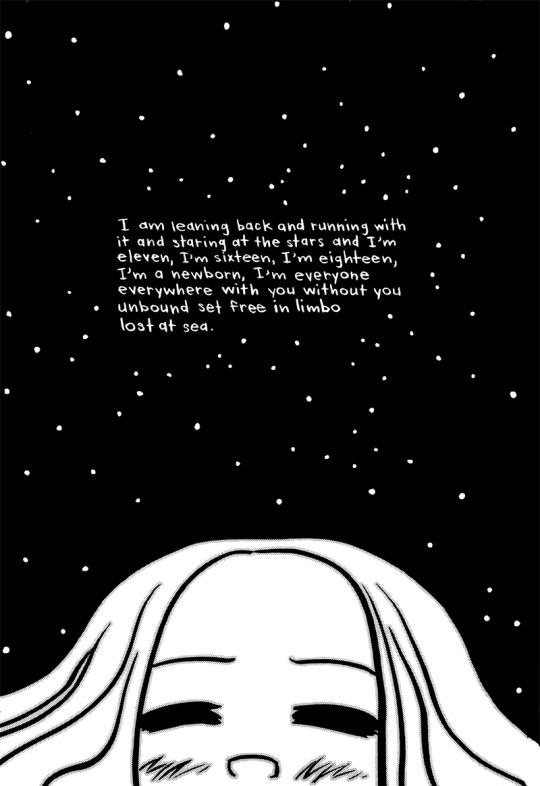
Between these I was also reading the collection Jillian Tamaki's SuperMutant Magic Academy, her gorgeous and gorgeously weird webcomic. Ostensibly the story of a group of super powered/magical/gifted teenagers at a boarding school, it’s described as a mash-up between Harry Potter and the X-Men, but really it's nothing like these. It is its own strange little thing.
I love that you can tell it began as an excuse for Tamaki to just let loose on the page. Tamaki is known for her crisp and clean line art that she uses for her books, but the art in a lot of SuperMutant strips -- and especially in the early ones -- are rough, almost sloppy, as if they were done quickly and in the moment. It fits the throw-away nature of the humor. The art style starts to get tighter as the strip goes on, and the light gags begin give way to darker jokes and meditations. Tamaki never chooses to permanently stay in one form or the other, though, neither in terms of art or story -- they never stop fluctuating. This gives the comic a kind of fluidity that make the strips range from the relatively straightforward

to the surreal

to the somber

more or less on a strip-to-strip basis.
(My favorites of these are the ones featuring Everlasting Boy, her immortal, silent character, whose strips consist of what I can only call playful existentialism.)
The strips are mostly self-contained, one-shot things, although the last few dozen that end the collection feature a poignant take on the Chosen One story that is so wonderfully and beautifully done that it borders on frustrating (it is so short). It's so good that it could have been expanded to it's own graphic novel. Maybe one day. What do you think, E.B.?
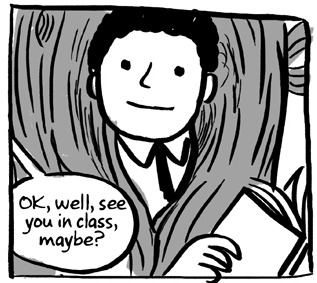
#the reading list#book review#supermutant magic academy#jillian tamaki#lost at sea#seconds#bryan lee o'malley#dr. seuss and mr. geisel#judith morgan#neil morgan
0 notes